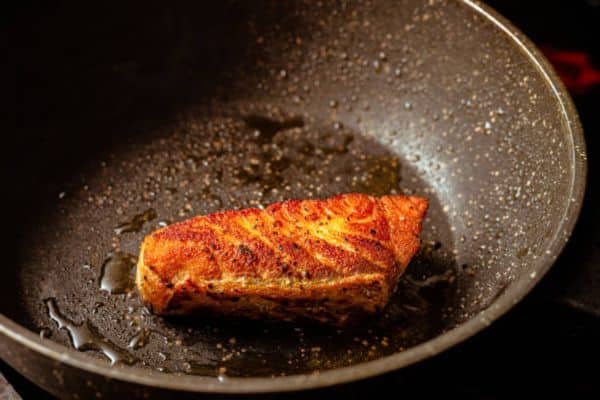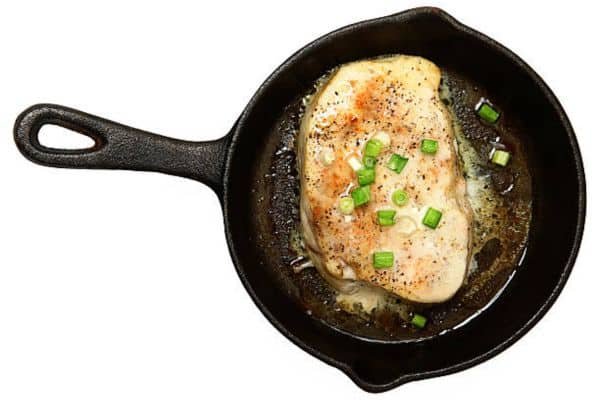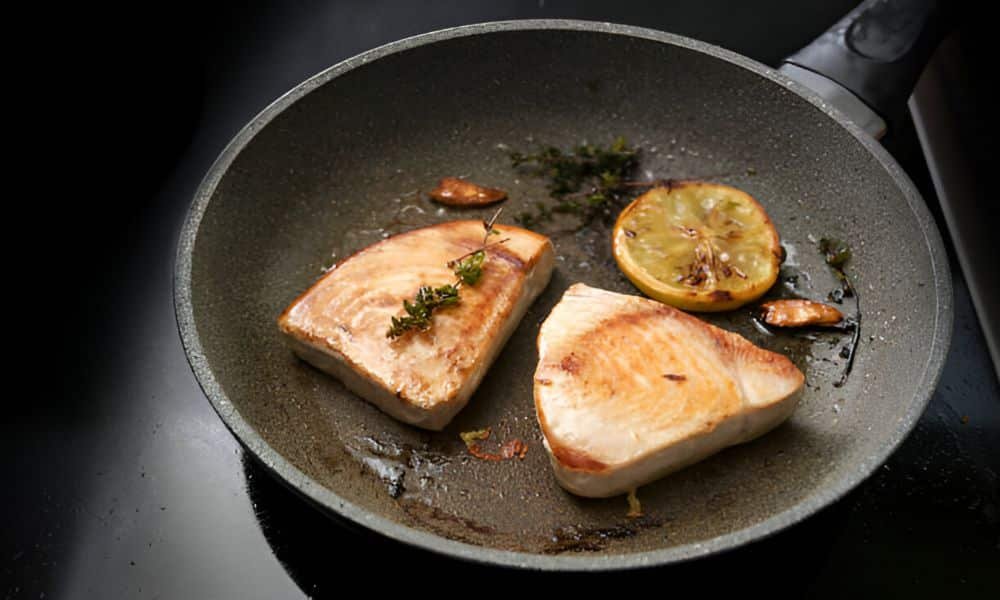I never thought I could cook swordfish at home. It always seemed like a restaurant dish. One day, I gave it a try. I used my favorite pan—the same one I use for the best small fry pan eggs. The result surprised me. The fish turned out tender, juicy, and full of flavor. No stress. No fancy tools. Just a hot pan, simple seasoning, and a little patience. That one try changed the way I see seafood. Today, I’ll show you exactly how to cook swordfish in a frying pan—step by step, the easy way. Let’s get started.
Why Swordfish Is Great for Pan Cooking
Swordfish is thick, firm, and meaty. It feels more like a steak than a soft fillet. That makes it ideal for pan cooking.
Most fish break apart or curl up in the pan. Swordfish stays strong. It holds its shape and stays flat. It’s easy to season. A little salt and pepper go a long way. Lemon brings it to life.
It’s also easy to flip. You don’t need special tools. A basic spatula works fine. Best of all, swordfish is beginner-friendly. It’s simple to cook and tough to ruin. One hot pan and you’re good to go.
Tools and Ingredients You’ll Need
You don’t need much to make great swordfish. Keep it simple. Fewer ingredients let the flavor shine.
Here’s what you’ll need:
- 1 swordfish steak (about 1-inch thick)
- Salt
- Black pepper
- Olive oil
- Half a lemon
That’s it. No marinades. No long prep. Just fresh, clean flavor.
Now for the tools:
Use a solid frying pan. Cast iron or stainless steel works best. It should hold heat well and stay hot.
A small fry pan is fine for a single egg, You’ll want something wider. The fish needs space to sear without steaming.
Step-by-Step: How to Cook Swordfish in a Frying Pan
Step 1: Bring swordfish to room temperature

Place the fish on a plate. Let it sit for 15 to 20 minutes. Cold fish won’t cook evenly. Room temp gives you a better sear.
Step 2: Pat dry and season simply
Use a paper towel to dry both sides. This helps with browning. Sprinkle with salt and black pepper. Nothing more is needed.
Step 3: Heat oil in pan until shimmering
Set your over medium-high heat. Add olive oil. Look for a light shimmer on the surface. That means it’s hot and ready.
Step 4: Sear on one side—no poking

Place the swordfish in the pan. You should hear a sizzle. Leave it alone. Let it cook for 3 to 4 minutes until the edges turn golden.
Step 5: Flip and finish cooking
Turn the fish gently with a spatula. Cook the second side for 2 to 3 more minutes. Press it lightly—firm but still springy is perfect.
Step 6: Rest and serve with lemon
Take the swordfish out of the pan. Let it rest on a plate for 2 minutes. Squeeze lemon juice over the top. That’s all it needs.
Expert Tips for Perfect Swordfish

Don’t overcook it
Swordfish turns dry fast. The goal is firm, not stiff. Press the center with your finger. It should bounce back slightly, not feel hard. I use the best small fry pan eggs
Use the right oil
Olive oil works great. It brings flavor and helps with browning. For a higher smoke point, try avocado oil.
Let it rest before serving
Give it two minutes off the heat. This helps the juices settle. Cut too soon, and they’ll run out.
Know the signs it’s ready
Look for an even golden crust. The middle should flake but stay juicy. A fork should slide in with no push.
Choose the right pan
Cast iron gives the best crust. Stainless steel holds heat well. A non-stick pan makes cleanup easier, but you’ll miss that sear. A small fry is perfect for eggs, but swordfish needs space. A wider pan gives the steak room to breathe and brown.
Common Mistakes Beginners Make (And How to Fix Them)
Cold fish in a hot pan
Pulling fish straight from the fridge leads to uneven cooking. Let it sit out for 15 to 20 minutes. Room temperature helps it cook evenly and brown better.
Using a weak or small pan
Thin pans heat unevenly. Small trap steam. That stops a good sear. A small fry pan is fine for eggs, but needs space and heat. Use a solid pan with room to breathe.
Too much seasoning
It has a clean, rich taste. Too many spices cover that up. Stick with salt, pepper, and lemon. Let the fish speak for itself.
Flipping too early
Let the crust form before turning. Flipping too soon breaks the surface. Wait until the edges are golden and the fish lifts easily.
What to Serve With Swordfish

Swordfish pairs well with light, fresh sides. A simple green salad works great. Roasted veggies like carrots or zucchini also shine. Garlic rice adds comfort without stealing the show.
You can add a little sauce for flavour. Lemon butter brings out the fish’s brightness. Herb oil adds color and depth. Garlic aioli gives it a creamy twist.
Keep the plate simple. Let that golden crust shine. Place the steak front and center. A lemon wedge on the side makes it pop.
Leftover Love: How to Store and Reuse
Got leftovers? No problem. Let the fish cool, then place it in a sealed container. Store it in the fridge for up to two days.
To reheat, use a pan on low heat. Add a splash of water or oil. Cover with a lid to keep it moist.
Leftover It works great in lunch wraps. Flake it into a green salad or stuff it into soft tortillas. It stays tasty and holds its shape.
Final Thoughts
You don’t need a fancy kitchen to make swordfish. Just grab a fresh steak, heat and keep it simple. A little salt, a little lemon, and you’re good to go.
Even first-time cooks can get it right. It is strong, tasty, and easy to handle. Trust and your senses.
Give it a try tonight. Use what you have. Once you’ve cooked swordfish in a frying pan, you’ll wonder why you waited.

